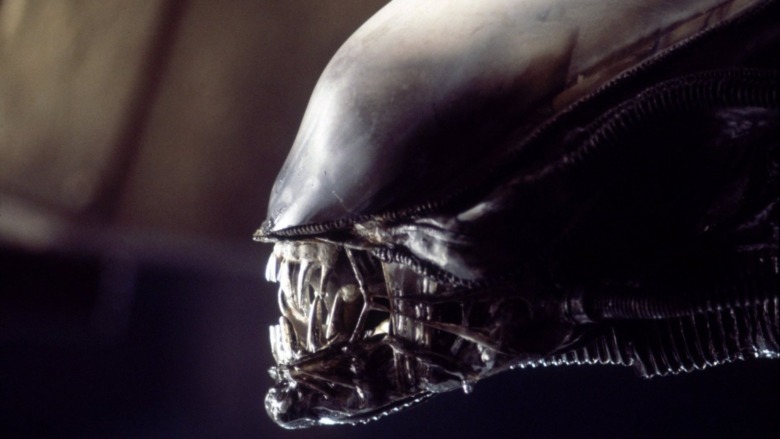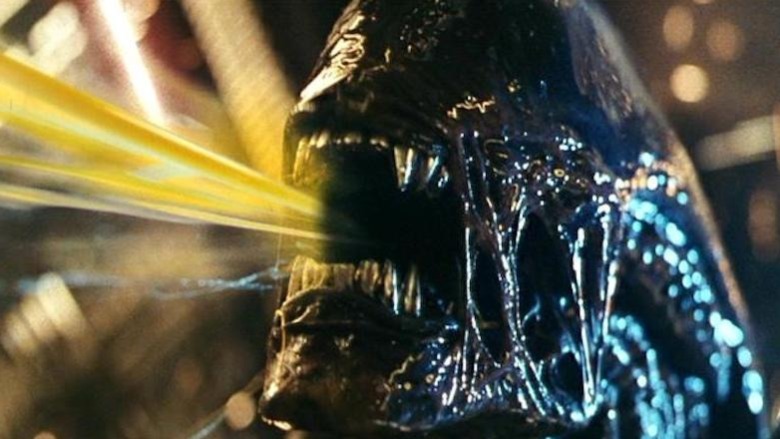Why The Biology Of The Xenomorph In Alien Makes No Sense
Ever since their debut in Ridley Scott's chilling 1979 science-fiction horror, "Alien," the Xenomorphs have been one of the most iconic figures in pop culture. The unique character design by legendary artist H.R. Geiger struck a chord with audiences who were terrified as it stalked Ellen Ripley (Sigourney Weaver) and the crew of the Nostromo in the depths of space. It was essentially the apex predator of the universe until the franchise crossed over with the actual Predator series of course. But that's a debate for another time.
The Xenomorph's unique biology serves no other purpose than to hunt its prey and slaughter them in a variety of ways. In the last forty years, victims have been killed by its inner jaw, ripped apart with its claws, or stabbed with the knife-like tail. That's all without mentioning the horrifying Facehuggers which deposit an embryo into a host's chest to give way to the Xenomorph's bloody birth several hours afterward. Although it did get a little silly in later films, who can forget "Alien: Resurrection"? One memorable moment saw a baby Xenomorph burst out of Larry Purvis (Leland Orser) and ripped its way straight through a villainous scientist's head in one bloody double-kill. Cinema at its finest...
But although Ridley Scott later revealed in"Prometheus" and "Alien: Covenant" that the android David was responsible for helping to engineer the creature into its iconic final form – there's a specific part of its biology which doesn't really make sense.
Hurting the Xenomorphs should've caused catastrophic damage
If the Xenomorphs weren't deadly enough as it is, their acidic blood is a last defense against anyone or anything that hurts the monster, dousing the victim in the neon green liquid which dissolves anything it comes into contact with. During the 1979 film, the acid blood melted right through a number of decks on the Nostromo, and two Colonial Marines had their faces melted during the assault on LV-426 in James Cameron's 1986 sequel.
But as pointed out in a hilarious animated sketch by Adult Swim's "Robot Chicken" (via YouTube), the blood should've caused much more damage to the various ships that the franchise takes place on. If a wounded Xenomorph is stumbling around bleeding acid everywhere, surely it should fall through the floor as it's moving, since the blood instantly burns through everything within seconds. That would not only cause even more damage to the ship, but the monster would also take damage from falling – possibly spraying even more blood around the craft. Who knows, maybe the "Alien" TV show on FX will address this problem.
It's also a minor miracle that it didn't accidentally burn through the hull of the Nostromo, the Sulaco, or the USM Auriga. That would've caused major decompression in the ships which would've likely killed everyone onboard. Obviously, that would end the story a little sooner than expected, but it's an interesting detail nonetheless. We did see something similar at the end of"Alien: Resurrection" when the Alien/Human hybrid creature was slowly sucked through a tiny hole in the USM Auriga's window – but it's surprising the after-effects of the acid blood haven't been fully addressed before now.

